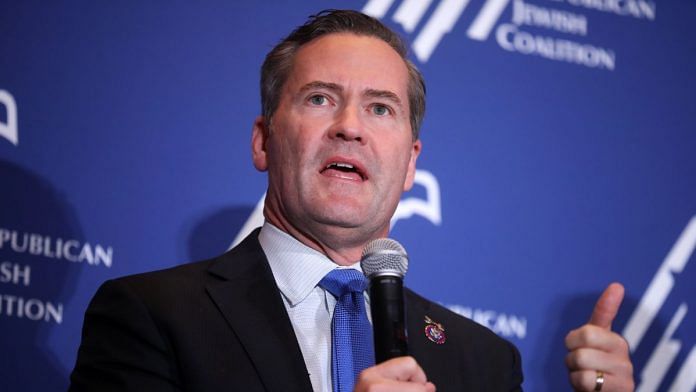New Delhi: A new media report claims that an incorrectly saved iPhone contact dating back to the 2024 Trump campaign led to ‘Signalgate’ last month, when US National Security Adviser Mike Waltz “accidentally” included a journalist in a top-secret group chat about US military strikes in Yemen.
An exclusive report in The Guardian, citing three people briefed on the matter, said a White House internal probe found that the blunder was months in the making.
Last month, The Atlantic’s Editor-in-Chief Jeffrey Goldberg reported that Waltz included him in a group chat called ‘Houthi PC small group’ on the Signal app, where top US administration officials discussed plans to strike the Houthi group in Yemen. The leak, later dubbed ‘Signalgate,’ opened the Trump administration up to criticism for using an insecure channel to discuss highly sensitive military information.
According to a report in The Guardian published Sunday, a White House investigation found that this occurred because Waltz mistakenly saved Goldberg’s phone number under the contact details of US National Security Council spokesman Brian Hughes last year. With the mistake going unnoticed at the time, Waltz then added what he assumed was Hughes’s number to the group chat.
The platform, though criticised for its lack of security, had been authorised by the White House as a temporary solution for secure real-time communications across different agencies.
At first, the report added, US President Donald Trump considered firing Waltz for even having Goldberg saved as a contact on his phone. Trump allegedly “despises” The Atlantic.
But, in the end, he chose not to because he didn’t want the magazine or other media outlets to celebrate the ouster of a top cabinet official just weeks into his second term.
How it happened
According to The Guardian, it all began in October last year when Goldberg allegedly emailed the Trump campaign team, ahead of the 2024 presidential elections, for a comment on an article criticising Trump’s stance on wounded veterans.
In response, the campaign enlisted Waltz, the “national security surrogate”, to help counter the narrative. The email from Goldberg was forwarded to Hughes, then a spokesperson for the Trump campaign, who copied its contents, including Goldberg’s phone number, and sent it in a text message to Waltz.
Waltz was allegedly supposed to be briefed on a planned pushback to the article. While he never ended up calling Goldberg, he managed to save the journalist’s number under Hughes’s contact details.
According to the White House, The Guardian said, the number was saved due to a “contact suggestion update” on Waltz’s iPhone—a feature where the phone’s algorithm suggests contact details it thinks might be relevant.
The error went unnoticed until a recent internal investigation found that Goldberg’s number had remained in Waltz’s phone since the campaign exchange.
After the incident, Waltz took responsibility, calling it “embarrassing” in an interview with Fox News. He said that another contact, not Goldberg, was supposed to be in the chat, claiming, “100 percent I don’t know this guy.”
When asked how Goldberg’s number got added, he suggested it was a case of “getting sucked in”.
Goldberg, however, said they had met several times.
In the wake of the controversy, Trump publicly defended his national security adviser, even taking Waltz with him aboard Marine One as a sign of solidarity.
In his article for The Atlantic published in March, Goldberg detailed how the leak unfolded, including that he had initially thought it was some kind of hoax. The 18-person group, he said, also included Vice President J.D. Vance, Defence Secretary Pete Hegseth and Secretary of State Marco Rubio.
After the strike on 14 March, Goldberg left the chat and reported the details, publishing the full messages in The Atlantic. The White House confirmed the messages were legitimate.
(Edited by Sanya Mathur)






